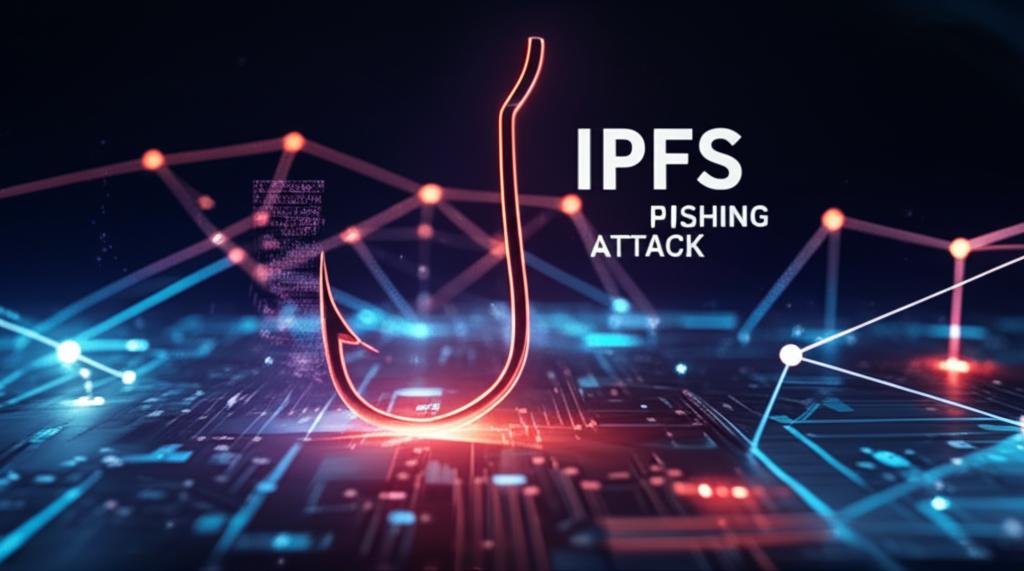Urgent Warning: Unmasking the IPFS Phishing Attack Threat
As the Web3 ecosystem expands, attackers are increasingly leveraging IPFS to host malicious content, making it harder for traditional security measures to detect and shut down their operations. Understanding these threats is crucial for anyone engaging with decentralized applications (dApps) and the broader Web3 landscape.
Understanding IPFS: A Quick Overview
Before diving into the attacks, let’s briefly recap how IPFS operates:
- Content Addressing: Unlike traditional web where content is located by where it’s stored (e.g.,
https://example.com/file.jpg), IPFS identifies content by what it is (its cryptographic hash). This means if the content changes, its address changes. - Decentralization: Files are stored across a network of participating nodes, not on a single central server. When you request a file, IPFS finds peers closest to you who have that content.
- Gateways: To access IPFS content from a regular web browser, you often use an IPFS gateway (e.g.,
dweb.link,cloudflare-ipfs.com). These gateways fetch content from the IPFS network and serve it over HTTP.
This decentralized, content-addressed nature makes IPFS incredibly robust but also provides unique advantages for bad actors.
The Rising Threat: How Attackers Exploit IPFS
Phishing attacks on IPFS leverage its inherent features to create more persistent and evasive scams:
- Censorship Resistance: Once malicious content is uploaded to IPFS and pinned by multiple nodes, it becomes extremely difficult to remove. There’s no central authority to issue takedown notices to.
- Obscured Malicious Content: The unique IPFS content hashes (CIDs) can make it harder for users to immediately identify a URL as malicious, especially when accessed via a gateway.
- Legitimacy by Association: Attackers might use IPFS in conjunction with legitimate services or short URLs to mask the true destination, tricking users into believing they are interacting with trusted platforms.
- Persistent Campaigns: Traditional phishing sites are often quickly detected and blocked. IPFS-hosted phishing sites, however, can remain online for extended periods, continuously targeting victims.
Common IPFS Phishing Attack Vectors
Attackers employ various methods to trick users into interacting with IPFS-hosted malicious content:
- Deceptive Links: Users receive links via email, social media, or messaging apps that appear legitimate but lead to an IPFS gateway hosting a fake login page for crypto wallets, exchanges, or dApps.
- Malicious dApps/Web3 Interactions: A seemingly innocuous dApp might prompt users to connect their wallet, only to then request permissions for a malicious transaction or drain funds directly. While not always directly IPFS-hosted, such dApps might leverage decentralized storage for their frontend.
- Wallet Drainers: These are sophisticated scripts often embedded in phishing sites that, upon connecting a user’s wallet, automatically initiate transactions to transfer all assets out of the wallet.
- Token Approvals: Phishing sites can trick users into approving unlimited spending limits for certain tokens to an attacker’s address, allowing the attacker to drain those tokens later without further interaction.
How to Recognize an IPFS Phishing Attempt
Vigilance is your best defense. Look out for these red flags:
- Unusual URLs: While legitimate dApps might use IPFS gateways, be wary of URLs containing
ipfs://,ipns://,dweb.link,cloudflare-ipfs.com,gateway.pinata.cloud, or similar, especially if they are unexpected or appear in suspicious contexts. Always double-check the domain after the gateway. - Suspicious Requests: Be extremely cautious if a website asks for your private key, seed phrase, or prompts an unexpected wallet connection or transaction approval.
- Typos and Grammatical Errors: Phishing sites often contain subtle spelling mistakes, poor grammar, or inconsistent branding.
- Sense of Urgency or Threat: Attackers frequently use social engineering tactics, creating a false sense of urgency (e.g., “Your account will be suspended!”) to rush users into making mistakes.
- Mismatched Information: Cross-reference any claims with official sources. If an offer seems too good to be true, it probably is.
Mitigation Strategies: Protecting Yourself
Protecting your assets in the decentralized world requires proactive measures:
- Verify URLs Directly: Always manually type official URLs or use verified bookmarks. Never click on suspicious links, even if they appear to come from a known sender.
- Use Reputable IPFS Gateways (Cautiously): While gateways are necessary, be aware that the content served through them is still from the decentralized network. Verify the content itself, not just the gateway’s legitimacy.
- Leverage Security Tools and Browser Extensions:
- Wallet Extensions: Use official wallet extensions (e.g., MetaMask, Phantom) and understand their security prompts.
- Antivirus/Anti-phishing Software: Keep your traditional security software updated.
- Web3 Security Extensions: Tools like Revoke.cash, WalletGuard, or similar can help identify malicious transactions before you approve them.
- Hardware Wallets: For storing significant amounts of cryptocurrency, hardware wallets provide an additional layer of security by requiring physical confirmation for transactions.
- Educate Yourself and Others: Stay informed about the latest phishing techniques and share this knowledge. The community is a strong defense.
- Check Token Approvals Regularly: Use tools like Revoke.cash to review and revoke unnecessary token approvals for dApps you no longer use or don’t fully trust.
- Report Suspicious Activity: If you encounter a phishing site or link, report it to the relevant platforms (e.g., browser security teams, wallet providers, social media platforms) to help protect others.
In the decentralized future, personal responsibility for cybersecurity is paramount. The absence of a central authority means users must be their own first line of defense against threats like IPFS phishing attacks.
Conclusion: Vigilance is Key in Web3
The innovation of IPFS and the broader Web3 ecosystem promises a more robust and equitable internet. However, with great power comes great responsibility – for users to secure their digital assets. By understanding how IPFS phishing attacks operate, recognizing their tell-tale signs, and adopting rigorous security practices, you can navigate the decentralized web safely and confidently.
Stay vigilant, stay informed, and always double-check before you click or connect.







